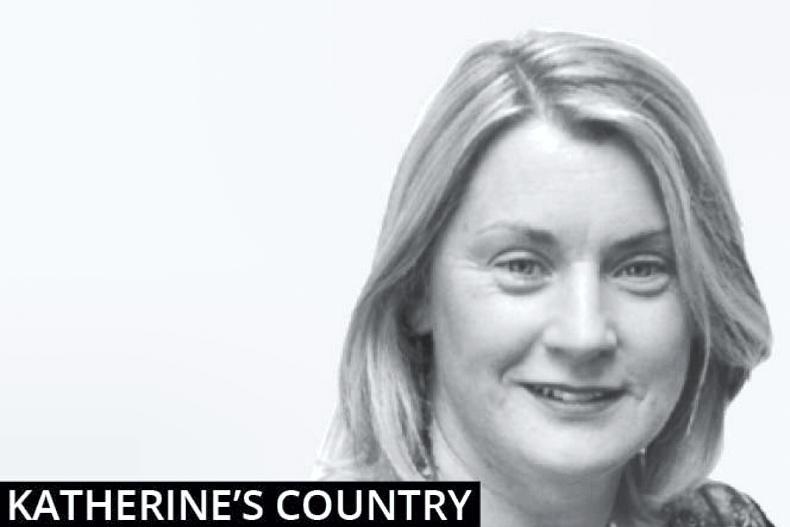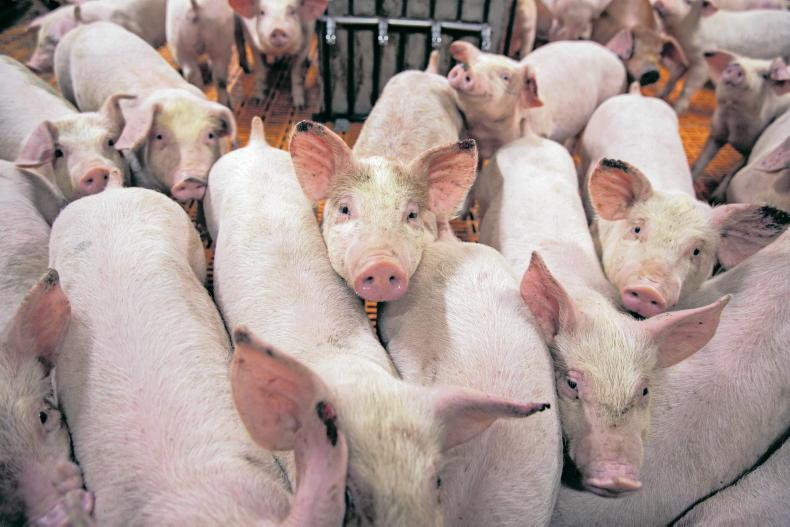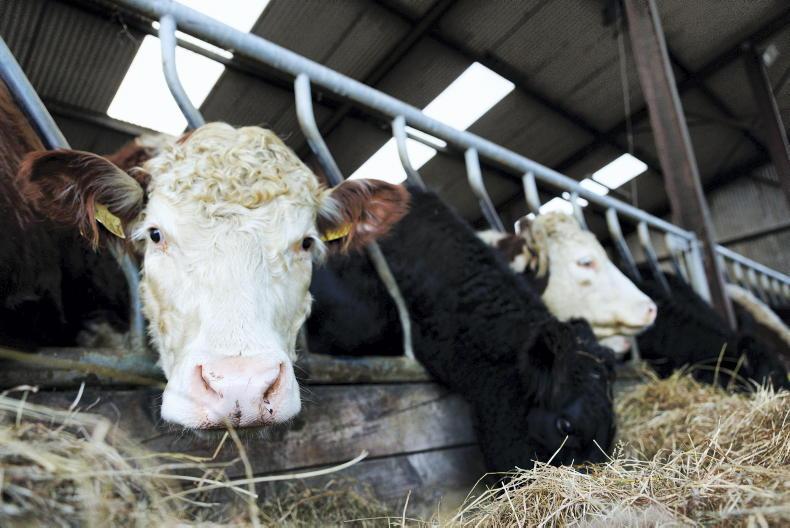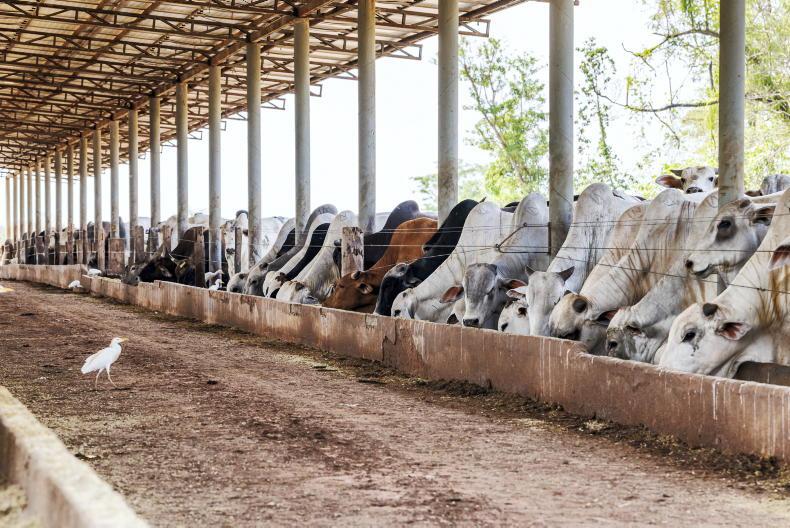The wind howls around the house and it has rained all day. The arrival of baby calves is imminent. Somehow it feels almost cruel for them to be born in this weather. The due date of our first calf is 6 February, but with Jersey-cross animals we can expect to have calves next week. Philip and Colm have been busy over the last few days readying the calf shed. All the calf pens were disinfected in September with a product active against rotavirus.
In 2016 we had a severe outbreak. In 2017 all cows and heifers were vaccinated. We still had quite a bit of scour as the numbers built up in the shed. This concerns us because we know it impacts the future growth, fertility and production potential of the cows. This is something we can never quantify on our own farms, but scientific evidence is there to inform us that gut damage has an impact on future production.
The attainment of a heifer’s true potential may never be realised. The responsibility for a good foundation rests with the calf rearer. We are attempting to tick all the relevant boxes.
The added labour required in nursing sick calves back to health cannot be ignored.
Disease outbreaks cost money in terms of veterinary intervention and subsequent treatment. Loss of production means less profit. The toll on the farmer is difficult to measure. You are much longer in the shed than you need to be, consequently your attention to detail may be reduced – causing other problems to arise. So preparation is key.
Last year John Barry, who is doing a PHD at Teagasc Moorepark under senior researcher Dr Emer Kennedy, began a study on the welfare of calves on 47 farms. Colm was lucky enough to be randomly chosen. He didn’t hesitate once he got the call. One never knows what might turn up from on-farm investigation, particularly by professionals.
The preliminary results were presented to the farmers at Moorepark in early December. Colm, Philip and I went there with open minds, because we are always willing to learn. I consider myself good at calf rearing. I thought myself good at it 25 years ago, but today I’m not so sure. There are so many new challenges coming on-stream all of the time.
It is matched by scientific investigation and research if we are willing to avail of it. What you imagine you are dealing with in terms of disease, might not be the reality at all. Experience informs us, but sometimes we just think we know the answers and act accordingly.
A NEW CHALLENGE
A detailed and informed presentation was made by Emer and John. Each farm was presented with the findings for their own farm. Six calves were tested on each farm over two visits. We grabbed the document with these questions in our minds: what were the ammonia levels in the bedding? We do not clean out the sheds during calf rearing because of shed design and being busy.
We use copious amounts of straw. What was the scour problem last year? We took it for granted that it was rotavirus as it had been the year before? We know we have a cold shed and we use stock board, walls of straw and wind breaker to mitigate this. We monitor the temperature and we use calf jackets. How were we doing on temperature?
Philip was first to read the results of the faecal samples. “Cryptosporidium pos and some E-coli pos.” Expletives followed. No sign of the dreaded rota word. I looked closer for fear he had misread the findings. In a way it was a relief to find there was something else going on besides rotavirus.
We consider ourselves good on hygiene and follow as many guidelines as possible. When the workload is heavy and you are under time pressure, it is easy to make mistakes in the hygiene realm.
We were genuinely gob-smacked with this new piece of information. So plans and strategies are being redrafted. E-coli bacteria are always present on farms and infection is opportunistic when a calf’s immune system is compromised. Cryptosporidium is a problem on many farms. It is treacherous in that there is no known cure. But apparently there is only one agent active against Crypto infection. It is called Halofuginone lactate and does reduce symptoms.
According to the clinical sheet
it treats scours caused by this parasite, but it also reduces excretion of infective oocysts from sick calves, therefore reducing the spread of the disease to healthy calves.
The treatment must start within 24 hours of birth and continue for seven days. It is a prescription-only medicine. So this is a new job for the calf rearers. It will add cost, but we believe it will return dividends in the improved health of the calves. We scored well on all the other questions that had been in our minds.
COLOSTRUM MANAGEMENT
One farmer asked the researchers what were the two most important recommendations that farmers should note. Emer emphasised that colostrum management was the key to good immunity in the calf’s gut and subsequent protection from disease. She said every farm should have a fridge and colostrum should be refrigerated immediately once collected.
They also recommended having a scour testing kit on the farm, so as to be informed as to what the problem might be. Colm ordered this online at a cost of €80.
I hope it will be a good season on farms this spring. Here in Woodside all we have to do is wait for the calves to drop. CL
Read more
Profit is everything-2018 positive farmers conference
Another year begins
The wind howls around the house and it has rained all day. The arrival of baby calves is imminent. Somehow it feels almost cruel for them to be born in this weather. The due date of our first calf is 6 February, but with Jersey-cross animals we can expect to have calves next week. Philip and Colm have been busy over the last few days readying the calf shed. All the calf pens were disinfected in September with a product active against rotavirus.
In 2016 we had a severe outbreak. In 2017 all cows and heifers were vaccinated. We still had quite a bit of scour as the numbers built up in the shed. This concerns us because we know it impacts the future growth, fertility and production potential of the cows. This is something we can never quantify on our own farms, but scientific evidence is there to inform us that gut damage has an impact on future production.
The attainment of a heifer’s true potential may never be realised. The responsibility for a good foundation rests with the calf rearer. We are attempting to tick all the relevant boxes.
The added labour required in nursing sick calves back to health cannot be ignored.
Disease outbreaks cost money in terms of veterinary intervention and subsequent treatment. Loss of production means less profit. The toll on the farmer is difficult to measure. You are much longer in the shed than you need to be, consequently your attention to detail may be reduced – causing other problems to arise. So preparation is key.
Last year John Barry, who is doing a PHD at Teagasc Moorepark under senior researcher Dr Emer Kennedy, began a study on the welfare of calves on 47 farms. Colm was lucky enough to be randomly chosen. He didn’t hesitate once he got the call. One never knows what might turn up from on-farm investigation, particularly by professionals.
The preliminary results were presented to the farmers at Moorepark in early December. Colm, Philip and I went there with open minds, because we are always willing to learn. I consider myself good at calf rearing. I thought myself good at it 25 years ago, but today I’m not so sure. There are so many new challenges coming on-stream all of the time.
It is matched by scientific investigation and research if we are willing to avail of it. What you imagine you are dealing with in terms of disease, might not be the reality at all. Experience informs us, but sometimes we just think we know the answers and act accordingly.
A NEW CHALLENGE
A detailed and informed presentation was made by Emer and John. Each farm was presented with the findings for their own farm. Six calves were tested on each farm over two visits. We grabbed the document with these questions in our minds: what were the ammonia levels in the bedding? We do not clean out the sheds during calf rearing because of shed design and being busy.
We use copious amounts of straw. What was the scour problem last year? We took it for granted that it was rotavirus as it had been the year before? We know we have a cold shed and we use stock board, walls of straw and wind breaker to mitigate this. We monitor the temperature and we use calf jackets. How were we doing on temperature?
Philip was first to read the results of the faecal samples. “Cryptosporidium pos and some E-coli pos.” Expletives followed. No sign of the dreaded rota word. I looked closer for fear he had misread the findings. In a way it was a relief to find there was something else going on besides rotavirus.
We consider ourselves good on hygiene and follow as many guidelines as possible. When the workload is heavy and you are under time pressure, it is easy to make mistakes in the hygiene realm.
We were genuinely gob-smacked with this new piece of information. So plans and strategies are being redrafted. E-coli bacteria are always present on farms and infection is opportunistic when a calf’s immune system is compromised. Cryptosporidium is a problem on many farms. It is treacherous in that there is no known cure. But apparently there is only one agent active against Crypto infection. It is called Halofuginone lactate and does reduce symptoms.
According to the clinical sheet
it treats scours caused by this parasite, but it also reduces excretion of infective oocysts from sick calves, therefore reducing the spread of the disease to healthy calves.
The treatment must start within 24 hours of birth and continue for seven days. It is a prescription-only medicine. So this is a new job for the calf rearers. It will add cost, but we believe it will return dividends in the improved health of the calves. We scored well on all the other questions that had been in our minds.
COLOSTRUM MANAGEMENT
One farmer asked the researchers what were the two most important recommendations that farmers should note. Emer emphasised that colostrum management was the key to good immunity in the calf’s gut and subsequent protection from disease. She said every farm should have a fridge and colostrum should be refrigerated immediately once collected.
They also recommended having a scour testing kit on the farm, so as to be informed as to what the problem might be. Colm ordered this online at a cost of €80.
I hope it will be a good season on farms this spring. Here in Woodside all we have to do is wait for the calves to drop. CL
Read more
Profit is everything-2018 positive farmers conference
Another year begins









SHARING OPTIONS